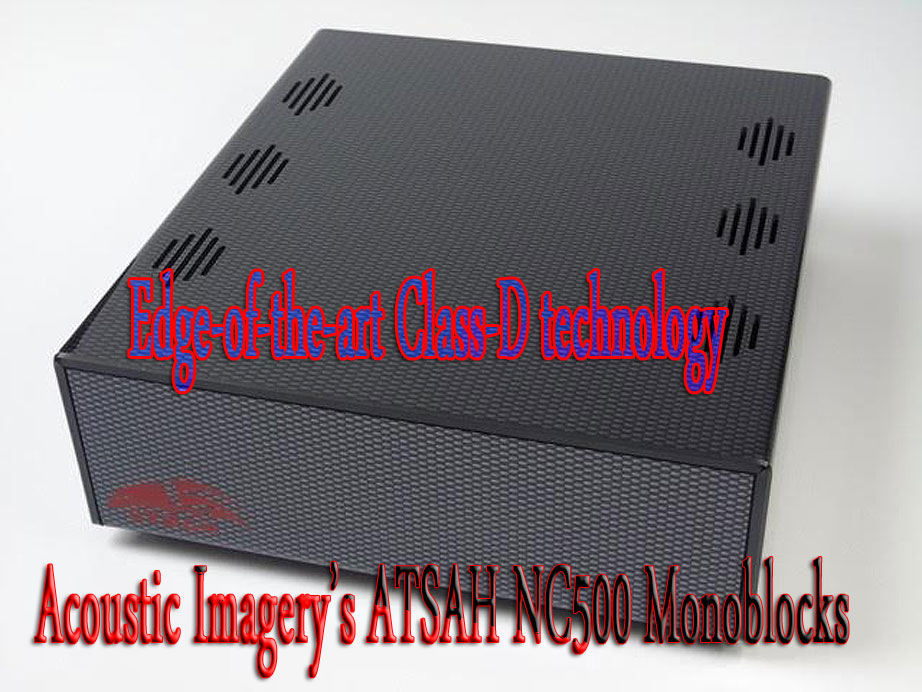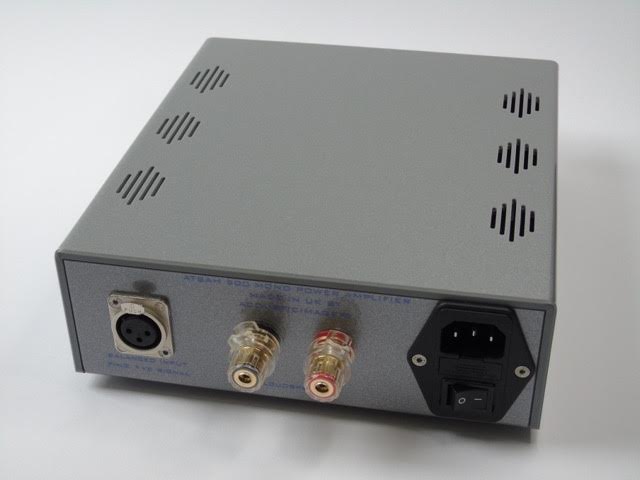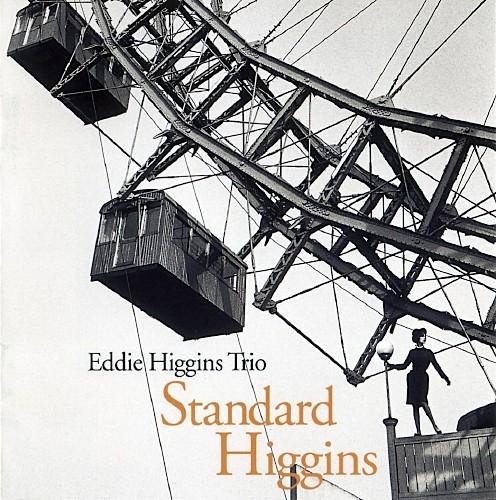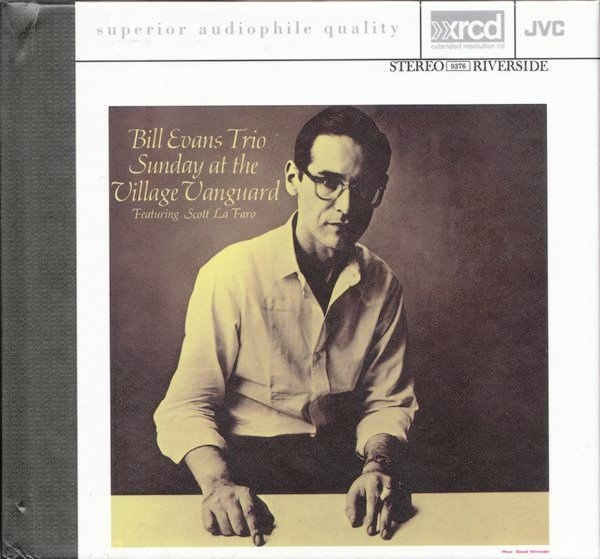Acoustic Imagery ATSAH NC500 Monoblock Amplifiers

We Built this City?
 I ask you, did Mazda create the Wankel rotary engine?! No. The unfortunately named Mr. Wankel did. Did Tudor build the automatic watch movements in their almost-a-Rolex desk diver?! Well… yes, but not until recently; very friggin’ recently. Previously, ETA took care of that minor detail for them. My point? (Lucky for you I actually have one) In the design phase, both these companies knew where to find the lynchpins around which to structure the rest of their product. So too is this the case for Acoustic Imagery, a British-based company headed by John Young and his partner Hilary (a different Hilary). Acoustic Imagery didn’t invent the OEM-only Hypex NC500 NCore amp module and SMPS 1200A700 power supply tucked neatly into each sexy little ATSAH monoblock amplifier on review here; Bruno Putzeys (aka “the Nelson Pass of class-D”) did.
I ask you, did Mazda create the Wankel rotary engine?! No. The unfortunately named Mr. Wankel did. Did Tudor build the automatic watch movements in their almost-a-Rolex desk diver?! Well… yes, but not until recently; very friggin’ recently. Previously, ETA took care of that minor detail for them. My point? (Lucky for you I actually have one) In the design phase, both these companies knew where to find the lynchpins around which to structure the rest of their product. So too is this the case for Acoustic Imagery, a British-based company headed by John Young and his partner Hilary (a different Hilary). Acoustic Imagery didn’t invent the OEM-only Hypex NC500 NCore amp module and SMPS 1200A700 power supply tucked neatly into each sexy little ATSAH monoblock amplifier on review here; Bruno Putzeys (aka “the Nelson Pass of class-D”) did.
John Young also didn’t invent plastic, rubber or copper; all of which are part and parcel of these Shakti-stone sized monoblocks. To wit, I’m sure the makers of these products (plastic, rubber and copper) will at some future time demand a commission or at least proper homage involving colorful Macaw feathers and a feral pig from John, and when that day comes…

In any case, these reasonably priced ($1,995.00/pair), exceedingly cute-n-compact ATSAH monos do indeed contain one class-D Hypex-sourced NC500 NCore module apiece as well as one SMPS 1200A700 power supply each; the self-same power supply used in the assembly of their muy espensivo (ten grand a pair) NC1200 based monos. Each NC500 amplifier module is rated at 400 watts into 8 ohms, a whopping 700 watts into 4 ohms, and drops off to a ‘measly’ 550 watts at impedances important only to those two or three of you who are Apogee Scintilla owners.
Even Apogee Scintilla owners who listen to death metal in very large beach homes need not fear though, as the NC1200 module (the NC500’s bigger, less affordable brother) offers still more power into the witheringly intense loads your Scintillas present, along with equally witheringly small THD numbers. For a brief, albeit fascinating look behind the scenes at how the NC500 module came to be, heeeeere’s John(ny) via cyber-pen:
“The NC500 came about after a collaboration between Hypex and one of their existing OEM customers, NAD. The classic 3020 budget stereo amp had been ‘reborn’ using low powered UcD Class D modules. When NAD wanted to launch a pre/power combo which was a more serious system in the $6K range, they looked at the NC400 DIY only amp and talked to Hypex about a version modified for them…with input from their own design team. In order to avoid confusion and to avoid all the other OEM’s crying ‘foul’, Hypex offered a version of this detuned NCore amp to the rest of us and called it NC500.”
John continues, “When we first got details, the specifications were based on using the DIY SMPS600 power supply. This was also ‘out of bounds’ for commercial bulk purchases. Subsequently, I think Bruno advised using the SMPS1200A700 power supply; which is used in our own NC1200 ATSAH Monos. In this configuration, the amp is as powerful as the NC1200 in all respects with the exception of into 2ohm loudspeakers. There are lower powered SMPS1200 versions but they are all the same price, so there is no real point in not fitting the most powerful power supply.”
Sooooo… compact size, high power, available in faux carbon fiber or titanium finished cases, low heat and supposedly stunning class D linearity, all in the setting of a noise floor purportedly somewhere between anechoic room and tomb? These here ATSAH NC500 monoblocks sure are some fine digital amplifiers, right? Wrong. Thoroughly and completely wrong, to be exact.
Let me explain. No; it would shock you too much if an ex-English major could. So better yet, we’ll let someone who didn’t spend their time in college studying romantic period poetry (guilty-eth as charge-ethed) explain.
Per John, “Class D refers only to the next letter along when they needed a new class of amp named… Class A, Class B, Class C…Class D. It’s been around for years and has only come to the forefront now with great leaps in quality made by various amp designers with Bruno Putzeys the master of them all. It’s just that we are in a digital world now for all aspects of electronics and people have just been making un-researched assumptions and coming up with the answer that Class D amps must be ‘digital amps’…nothing could be further from the truth. Here’s a little piece from one of Bruno’s early white papers for the AES:-“
Now, in my infinite, reviewer-like mercy, I will spare you (and me) the entire white paper, but in sum and in someone else’s words, (Bruno’s): “Since loudspeaker terminals require an analogue voltage, an audio power amplifier must have an analogue output. If its input is digital, digital-to-analogue conversion is necessarily executed at some point. Once a designer acknowledges the analogue output properties of a class D power stage, amplifier quality can improve. The incorrect assumption that some amplifiers are supposedly digital causes many designers to come up with complicated patches to ordinary analogue phenomena such as timing distortion or supply rejection. This irrational approach blocks the way to a rich world of well-established analogue techniques to avoid and correct many of these problems and realize otherwise unattainable characteristics such as excellent THD+N and extremely low output impedance throughout the audio band.”
Okay, agreed? Agreed. Now let’s see how these definitely-not-digital/named-for-the-letter-that-comes-next amplifiers actually sound…
I feel the need; the need for…
Jerry Seinfeld would absolutely love these amps. Like some of his ungodly expensive (to the 99.998 percent of us) Porsches, they come ensconced in your choice of titanium or carbon fiber body work (I prefer the latter, though received the former), are lightweight, efficient, European, and handle like a go-cart. You don’t need a separate garage temperature-controlled garage either; any small semi-enclosed media cabinet’ll work.
From the first notes, in conjunction with my recently acquired and pretty friggin’ “neutral” Simaudio Moon 350P preamp, it was evident these amps are faaast; Carrera 911 turbo fast. Maybe it’s the titanium-look casing.
 In fact, excepting the Naim Nait 2 I ownd for a time but sold because it didn’t entirely cut it for me tonally, the ATSAH’s may be the very PRaT-iest amps I’ve ever heard! After, for instance, the utterly majestic and introspective andante of Beethoven’s piano concerto No. 5, you should hear them launch into the finale! I was tapping my feet and air conducting furiously as soloist Paul Lewis played with his usual warmth, humanity and unfailing musicality as well as bravura technique on his recording with the BBC Symphony Orchestra of this canonic piece [streamed on Tidal]. The soundstage on the Paul Lewis Beethoven concerto recordings in general, and as later born out by just about every other recording of anything I played through the ATSAHs, was the widest and close to the deepest I’ve ever had in my home listening/living room. “You and the Night and the Music,” the first track on one of my new favorite albums Standard Higgins, as played by the Eddie Higgins Trio [streamed on Tidal] was like ten feet wide and their version of “Summertime” swung to beat the band!
In fact, excepting the Naim Nait 2 I ownd for a time but sold because it didn’t entirely cut it for me tonally, the ATSAH’s may be the very PRaT-iest amps I’ve ever heard! After, for instance, the utterly majestic and introspective andante of Beethoven’s piano concerto No. 5, you should hear them launch into the finale! I was tapping my feet and air conducting furiously as soloist Paul Lewis played with his usual warmth, humanity and unfailing musicality as well as bravura technique on his recording with the BBC Symphony Orchestra of this canonic piece [streamed on Tidal]. The soundstage on the Paul Lewis Beethoven concerto recordings in general, and as later born out by just about every other recording of anything I played through the ATSAHs, was the widest and close to the deepest I’ve ever had in my home listening/living room. “You and the Night and the Music,” the first track on one of my new favorite albums Standard Higgins, as played by the Eddie Higgins Trio [streamed on Tidal] was like ten feet wide and their version of “Summertime” swung to beat the band!
With superb recordings such as the Eddie Higgins Trio’s Ballads album [streamed via Tidal] stage extension was wayyyy back and feet outside my Tekton Lore Reference speakers on either side. Damned impressive. Bass on the same recording was deep, solid and ohhhh yiiiaaah—fast! No overhang and no bloat. For thrills, take a listen to the ATSAH’s reproduction of the steady stand-up bass lines underpinning “How My Heart Sings” from the aforementioned Eddie Higgins Trio album Standard Higgins [Tidal streamed via Audirvana+]; just soooo solid and subwoofer-deep; it’s crazy. You won’t believe your speakers are capable of such bass until you hook ‘em up through an amp that can let bass through like the ATSAHs. I didn’t! In fact, in these two regards (staging and bass), by way of comparison with my beloved ‘reference’ integrated amp, (the 40 watt Croft line integrated), there simply wasn’t one. Indeed, in my experience very few amps stage and do bass as well as the ATSAH’s.
As a final word or two on the subject, I recently had occasion to try out an SVS subwoofer in my home. Though excellent, I ended up returning it as I decided I simply didn’t need that much bass, quality or not, in my medium-sized apartment in the city. With the ATSAHs, it was as if the SVS rematerialized in the corner and I was forced to turn down the volume a time or two due to its phantom presence. And here I thought I’d returned that thing! It’s like a boomerang… Seriously, with these amps in a medium sized room, you won’t miss your subwoofer.
Fortunately, perhaps due to the plethora of detail on offer, the ATSAHs perform superbly well at my preferred neighbor-approved low-ish listening levels, though they seemed to be prompting/begging me to turn it up and make a little noise when I got really into whatever I was relaxing to/concentrating on at the moment.
 Low levels or high(ish), the ATSAHs did transients and impact startlingly (pun intended) well. Transients and impact translated into musical terms means drums, and the drums throughout Bill Evans Trio’s warhorse Sunday at The Village Vanguard [streamed on Tidal via Audirvana+] were stark and punchy and big ‘n drumset-like’ as you please. Cymbals had the sheen and shimmer I associate with cymbals; not the dull white noise sound bereft of overtones produced by the Dohm white noise machine in my bedroom. I mean, via the ATSAHs, when things are “struck” on a recording, you KNOW things are struck and how hard they’ve been struck. If, say, you’re reading, you look up pronto!
Low levels or high(ish), the ATSAHs did transients and impact startlingly (pun intended) well. Transients and impact translated into musical terms means drums, and the drums throughout Bill Evans Trio’s warhorse Sunday at The Village Vanguard [streamed on Tidal via Audirvana+] were stark and punchy and big ‘n drumset-like’ as you please. Cymbals had the sheen and shimmer I associate with cymbals; not the dull white noise sound bereft of overtones produced by the Dohm white noise machine in my bedroom. I mean, via the ATSAHs, when things are “struck” on a recording, you KNOW things are struck and how hard they’ve been struck. If, say, you’re reading, you look up pronto!
So too, there was better definition of instrumental outlines within that broad, deep stage than I’m used to hearing and that broad, deep stage the musicians populated was perhaps a bit closer to me than I’m used to. Instruments certainly seemed a bit closer to me than with my Croft integrated or with the other amp or two I had on hand. Fortunately, I really like this type of presentation, as at my low-ish listening levels a forward stage with extra instrumental sparkle and definition makes things ‘come alive’ a bit more. For example [via Jay Z’s Tidal again], a new discovery of mine, Tiny Vipers (aka singer/songwriter Jesy Fortino) and her accompanying guitar and all its harmonics were more starkly ‘in room’ present at these low-ish levels than usual.
The tone on something like my Croft amp is warmer for sure and by comparison the relatively more even-handed ATSAHs really show you how much that warmth is a characteristic of this and many other tubed amplifiers, even after you start believing they’re “neutral” because your brain has ‘adjusted’ to their sound. Don’t get me wrong, I like that warm signature a lot, but it’s certainly apparent in head to head comparison that the Croft’s “signature” is writ large over everything passing through. I didn’t feel the ATSAH’s were at all bright mind you; they simply seem to ‘leave the lights on’ where extreme upper registers are concerned. In this regard, they are not as warmish sounding as some of the other Class D amps I’ve heard, like the older Bel Cantos or Wyred 4 Sound amps I owned/heard that employed prior generation ICEpower modules.
Perhaps in part because they lack any artificial/”designed in” warmth, I’d say that the ATSAHs are perhaps the most sonically detailed amps I’ve heard. You can legitimately hear as deeply into a performance, (warts and all), as you’d like, though my initial concerns this would make them “grating” or ‘ruthlessly revealing’ never actually materialized during listening. To the contrary, their stunning way with detail made them a delight to listen to in my system; always interesting and revelatory and never sterile (unless the recording was).
Moreover, despite the misgivings of the single-ended triode police, there is something to be said for raw power and in this regard, the ATSAHs are among the most powerful amps I’ve ever auditioned in my home (including those older Bel Cantos and a large Musical Fidelity or two). I believe this is one of the reasons that, even given the extreme efficiency and ease of drive of my Tektons, music sounded forth with more effortlessness and effervescence than I’m used to.
Comparisons and Misgivings (also a great name for a novel, eh?)
Thus far you may gather I think the ATSAH NC500 monos a surpassing value-for-dollar in that they soundstage, play bass, pass on detail and go fast in a manner that surpasses nearly all amplifiers I’ve had in my home in the past 20 or so years. You’d be right. So they’re perfect? Yes, except for two areas. Okay, I guess that means no, they’re not perfect. (Whew! That was a close one; almost had to turn in my Audiogon account password and get off the ride! My accountant got excited there for a minute. Sorry Karen; false alarm).
As regards “imperfection number one,” you may congratulate me because according to ATSAH purveyor John Young, I managed to become the first person to report excessive RFI with his NC500 based Class D monoblocks. Yes, the first time I powered up the ATSAHs Cyndi Lauper made an unsolicited low-level appearance in my right speaker and she and her singer/songwriter ilk did so repeatedly until I was able to beat them back into their Tesla cages by dint of a sprinkling of ferrites and a pair of Mogami balanced interconnects.
Yes, my own beloved and purportedly very well shielded RCA Skywire IC’s (when used with the Cardas balanced adaptors as supplied me) allowed too much Lauper and other less musical RFI through and the ferrites and balanced IC’s managed to turn down the level to very tolerable “normal amplifier type” hiss only audible a foot or so from the speakers. In my defense and to my credit, I reside in a massively overpriced and AM radio riddled hub of civilization known to the Native Americans (three of which may still live here) as Manhattan. Also in my defense, another Class D amplifier I had on hand here recently also exhibited more RFI than I’m used to from a well-designed class A or A/B amplifier. What gives? Something with the breed? Bah! Not tech-savvy enough to know.
“Imperfection number two” pertains to a slight lack of one specific quality as compared with the very best “traditional” amplifiers I’ve heard, such as a Wells Audio amplifier I currently have on review. Namely, despite their superb to my ears tonal balance, which lets them do things like allow Anne Sophie Mutter’s violin or Luciano Pavarotti’s voice to soar to the upper reaches of their ranges without ever veering into unwarranted “screechiness” or metallics (unless present on the recording), by way of comparison with master tonmeisters like the superb Wells amp, there is a slight lack of tonal density or weight. In other words, if I strike the top note on a piano, there is is the metallic ping and then the envelope or woody overtones and the ATSAH may be slightly more ping than ping plus overtones. In the piano’s middle register or lower, it means slightly less heavy piano body/muddy overtone resonance from the vibrating soundboard; slightly less “heft” vs. the Wells. Simply put, the full harmonic envelope may not be quite as present and fulsome as with a big Audio Research (I used to own Classic 60’s) or a Wells.
What?! You want total perfection at 2 grand in two tiny faux-titanium boxes?! Me too. To be fair, this quality (or slight lack thereof) required multiple head to head matchups to discern and I really doubt many people in actual use would dwell too much upon it. They’d be too distracted by the staging, bass, top end extension and effortlessness of the music-making to care about a quality whose slight lack is largely evident only in repeated close comparison with a larger, hotter, more expensive and less powerful black boxes.
ATSAH Boy!
I acknowledge the ATSAHs may not be the only way to get into NCore; not by a longshot. Some of you who aren’t me can DIY and there are an increasing number of companies making Bruno’s powerful, cool-running, edge-of-the-art class-D technology the heart-chakra of choice in their product line.
No the ATSAHs are definitely not the only game in town, but they are to my eye the most streamlined and sexy value-priced implementation of Bruno’s revelatory creations. To wit, they are well-built, lightweight, relatively cool-running, compact and sleekly attired and more importantly, these tiny titans offer among the very best sonics I’ve ever had the pleasure of welcoming into my home with little in the way of trade off.
With the ATSAHs in your system’s engine room, you have but to select a preamp and source to “flavor” the sound of these neutral powerhouses to taste. Or, maybe select a simple transformer volume control-based compact preamp (purportedly a great match with the ATSAHs) and let your sonic flavor be reverse-osmosis pure water.
Either way; rock solid bass, a walk-in soundstage, middle-of-the-road tone and exquisite detail coupled with massive power on tap, sleek design and diminutive size means this is one of the few amps I’ve heard that could be most things to most people: Radiohead or Ravel fans alike; low listening levels or dangerous, beach-house approved ones.
It’s a new dawn and the future for once is NOT digital. 😉
I bid you peace.


david abramsom
Features/Specs
- Output: 400 watts into 8 ohms, 700 watts into 4 ohms.
- Gain: 26 dB
- Input impedance: 95 kOhm
- Power Supplies: One Hypex SMPS1200A700 per amp.
- Input: 1 XLR input
- Outputs: One pair of binding posts.
- IEC switched fused mains input.
- Dimensions: 200mm wide x 220mm deep x 65mm high.
Distributor: Tweekgeek
Website: www.tweekgeek.com
Stereo Times Masthead
Publisher/Founder
Clement Perry
Editor
Dave Thomas
Senior Editors
Frank Alles, Mike Girardi, Russell Lichter, Terry London, Moreno Mitchell, Paul Szabady, Bill Wells, Mike Wright, and Stephen Yan,
Current Contributors
David Abramson, Tim Barrall, Dave Allison, Ron Cook, Lewis Dardick, John Hoffman, Dan Secula, Don Shaulis, Greg Simmons, Eric Teh, Greg Voth, Richard Willie, Ed Van Winkle, Rob Dockery, Richard Doran, and Daveed Turek
Site Management Clement Perry
Ad Designer: Martin Perry





Be the first to comment on: Acoustic Imagery ATSAH NC500 Monoblock Amplifiers